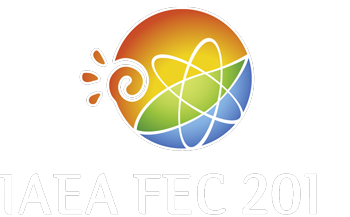Speaker
Dr
Francesca Turco
(Columbia University)
Description
Analysis of ~180 ITER Baseline Scenario (IBS) demonstration discharges in DIII-D provides insight into the cause of the 2/1 disruptive instabilities that limit the duration of these plasmas. Raw MSE data and detailed equilibrium reconstructions show that a larger current profile gradient in the region of the q=2 surface characterises the unstable cases, providing the drive for the 2/1 tearing mode onset. Rotation measurements indicate that lower differential rotation at the marginal stability point constitutes the additional separating factor for part of the unstable shots at low injected torque. The current profile is observed to evolve with the plasma rotation, due to modifications in the pedestal transport, and initial transport modeling shows that time dependent predictive simulations can capture these changes. The approach to the instability at low rotation is observed in Active MHD Spectroscopy (AMS) measurements of the plasma response. Drift-kinetic modelling of these measurements indicates that non-ideal effects are significant despite the relatively low βN of these plasmas. The inclusion of collisionality and resistivity is crucial to capture the nature of the modes and ensure predictive capability for ITER plasmas. A combination of the real-time AMS amplitude and phase measurements can be used to detect the onset of the relevant modes, potentially in time for a disruption avoidance or mitigation system to be deployed.
| Country or International Organization | United States of America |
|---|---|
| Paper Number | EX/P3-14 |
Author
Dr
Francesca Turco
(Columbia University)

